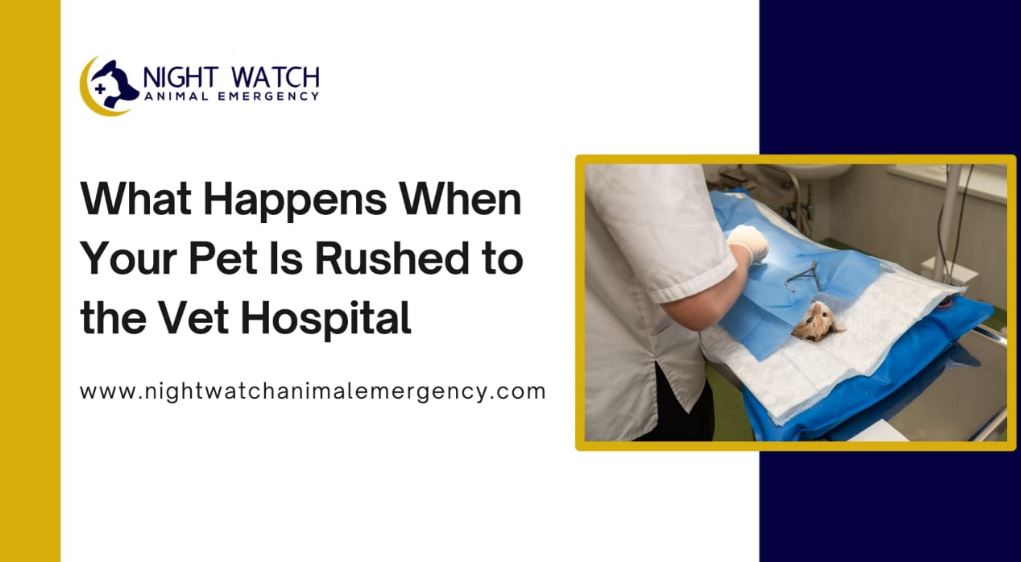What Happens When Your Pet Is Rushed to the Vet Hospital
A medical emergency with your pet can feel like a storm out of nowhere. Your heart pounds, you try not to panic, and all you want is to help your friend. In these scary moments, the process of pet emergency care begins—not only for your pet but for you as well. Knowing what happens at the vet hospital can help you feel stronger and more ready, even in tough times.
You are never alone when your pet needs help. The right team and the right care can make all the changes. Understanding each step can make the unknown less frightening. The hope is to return your pet home healthy, safe, and loved.
What to Expect When Your Pet Arrives at the Vet Hospital
When you bring your pet to an emergency vet hospital, many steps happen right away. The staff knows every minute matters. As soon as you come in, trained experts greet you. They work fast to check your pet’s health and make sure urgent cases get seen quickly.
Caring hands guide your pet from the front desk into the treatment area. You may see people in scrubs rushing around, machines beeping, or other animals waiting too. The team acts with care and skill, helping each animal as if it were their own. Thus, it is important to choose a professional and top emergency vet in San Antonio, a clinic that is ready to help at any hour.
The Triage and Initial Assessment
Triage is the first step in the process of pet emergency care. The word sounds fancy, but it just means deciding which cases need help the fastest. Staff look at how your pet acts, breathes, and responds. They ask you simple questions like-
- What happened?
- How long has your pet been sick or hurt?
- Have you given any medicine?
- What signs have you seen—vomiting, limping, or trouble breathing?
You might feel rushed, but this helps the staff take fast action. They use their training to spot danger signs. These could be pale gums, trouble standing, or deep wounds. The team works together to choose which pets get care first, so everyone gets the help they need.
Immediate Stabilization Efforts
If your pet is very sick or hurt, the staff will start care right away. This can look different for each animal. Some actions happen fast-
- Giving oxygen if the pet cannot breathe well
- Placing an intravenous (IV) line for fluids or medicine
- Treating shock or strong pain with safe drugs
These steps help keep your pet stable while doctors learn more about the problem. The calm voices and steady hands of vet staff show how much they care about your pet’s safety.
Diagnostic Tests and Critical Care Procedures
After the first rush, the focus shifts from basic care to finding what is wrong. This is a key part of the process of pet emergency care. Doctors use quick tests to look for clues. They may also use tools to see inside the body, which helps find the cause of the problem.
Common Diagnostic Tools Used in Emergencies
Just like in human hospitals, pet hospitals use a variety of tools. You may hear doctors talk about these-
- Bloodwork: Simple blood tests can show infections, organ trouble, or blood loss.
- X-rays: These pictures show bones, lungs, and stomach for signs of injury or blockage.
- Ultrasound: This tool lets vets see inside the belly and heart without surgery.
- Urine tests: These can show kidney problems or signs of diabetes.
Doctors use the results to decide on the next steps. Timely testing makes a big impact on how quickly your pet gets the right care.
Emergency Veterinary Surgery and Intensive Treatments
Sometimes, tests show that your pet needs surgery right away. This can sound scary, but it can also save lives. Emergency veterinary surgery is done by skilled vets who work quickly and carefully.
Here is what this part of the process can look like-
- The team gives medicine that helps your pet sleep and feel no pain.
- Surgeons work to fix wounds, remove blockages, or repair broken bones.
- When surgery finishes, your pet goes to a quiet area to wake up.
- Nurses and doctors watch your pet for signs of pain, infection, or shock.
After surgery, the process of pet emergency care still continues. Your pet may need-
- More fluids or medicine by IV
- Oxygen support
- Extra warmth or a special bed
Staff will keep you updated via phone or in person. They will go over what to expect moving forward. If your pet requires more in depth help, the staff will guide you through at home care options or what to expect from continued hospital care.
The Bottom Line
In emergency care for pets each step may seem fast and full of the unknown, but it brings your pet one step closer to health.
Trust the emergency vet teams’ expertise and care. At the first sign of trouble do not delay. Call or go to your emergency vet right away. Prompt action and a great staff can turn a scary situation into the beginning of a recovery.
Keep this guide close. Share it with other pet owners so they know what to expect. Your pet looks to you for care, and by being informed of what goes on at the vet hospital, you can proceed with confidence.




